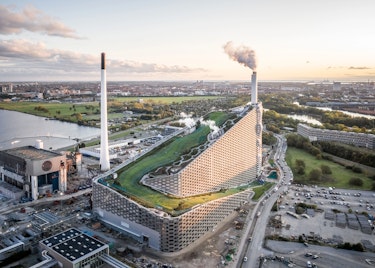Innovation has transformed almost every aspect of modern life, and the architectural industry is no exception. From the use of computer-aided design to the incorporation of sustainable materials and technologies, the field of architecture has seen significant advancements that have revolutionized the way architects approach their work. This essay will examine how innovation has changed the architectural industry, including the ways in which architects approach design, the materials they use, and the technologies they employ.
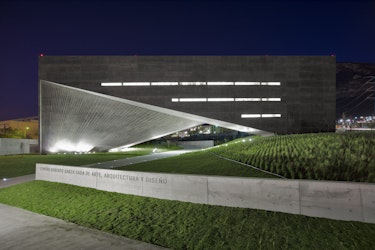
Credit: Architizer
Innovation has transformed the way architects approach design in several ways. Computer-aided design (CAD) and building information modeling (BIM) software have become essential tools for architects, allowing them to create detailed, three-dimensional models of their designs. These models can be viewed from multiple angles and easily manipulated to test different design options. This has not only increased the speed and accuracy of the design process, but it has also allowed architects to communicate their ideas more effectively with clients and stakeholders.
The use of new materials and construction techniques is another area where innovation has had a significant impact on the architectural industry. Sustainable materials such as bamboo, cork, and recycled steel are becoming increasingly popular as architects seek to design buildings that are environmentally friendly. Additionally, new technologies such as 3D printing are enabling architects to create unique and complex shapes that were previously impossible to achieve using traditional construction methods.
The rise of smart buildings is yet another example of how innovation is transforming the architectural industry. Smart buildings are designed to be energy-efficient and incorporate technologies that allow them to respond to the needs of their occupants in real-time. This includes everything from automated lighting and temperature control to advanced security systems that can detect and respond to potential threats. By utilizing these technologies, architects are able to create buildings that are not only functional but also responsive to the needs of the people who use them.

Credit: Archtonic
Innovation is also changing the way architects approach urban design. As cities become more densely populated, architects are being tasked with designing buildings that are both functional and aesthetically pleasing within a limited amount of space. This has led to the rise of vertical cities, which are designed to maximize the use of space by building upwards rather than outwards. The incorporation of green spaces, such as rooftop gardens and indoor courtyards, is also becoming increasingly common as architects seek to create more livable and sustainable urban environments.
The use of virtual reality (VR) and augmented reality (AR) is yet another example of how innovation is transforming the architectural industry. These technologies allow architects to create immersive, three-dimensional experiences that allow clients and stakeholders to experience a building before it is even built. This not only improves the design process by allowing architects to receive feedback early on but also improves the client experience by providing a more realistic representation of the final product.
Finally, innovation is changing the way architects approach the construction process itself. Prefabrication and modular construction techniques are becoming increasingly popular as they allow for faster and more efficient construction times. Additionally, the use of drones and other automated technologies is allowing architects to more easily monitor and manage construction sites, improving safety and reducing the risk of delays or mistakes.
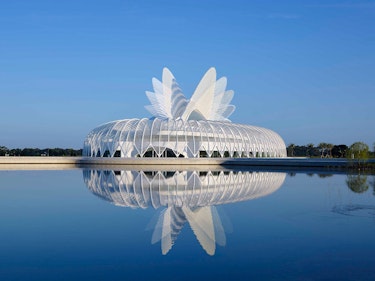
Credit: Santiago Calatrava
There are several ways to improve innovation in the architectural industry. Here are some suggestions:
1. Foster a culture of innovation: Innovation starts with a mindset. Encourage architects and designers to think outside the box and come up with new and creative ideas. Celebrate successes and learn from failures to create a culture of experimentation and continuous improvement.
2. Invest in research and development: Architects need access to the latest technologies and materials to push the boundaries of what is possible. By investing in research and development, firms can stay ahead of the curve and develop new approaches to design and construction.
3. Collaborate with other disciplines: Innovation often comes from interdisciplinary collaboration. Architects should work closely with engineers, contractors, and other experts to leverage their knowledge and expertise and find new solutions to complex challenges.
4. Embrace sustainability: Sustainability is one of the biggest challenges facing the architectural industry today. By prioritizing sustainable design principles, architects can not only reduce the environmental impact of buildings but also create healthier and more livable spaces for occupants.
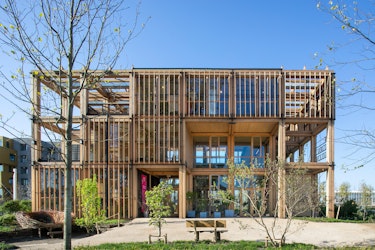
Credit: Dezeen
5. Incorporate user feedback: Architects should involve end-users in the design process and gather feedback throughout the construction process. This ensures that buildings meet the needs of their occupants and can adapt to changing circumstances over time.
6. Encourage ongoing learning: Architects should be encouraged to continue learning throughout their careers. This can include attending conferences, taking classes, and participating in online learning opportunities to stay up to date with the latest trends and technologies.
7. Leverage technology: Technology is transforming the architectural industry in many ways. Architects should leverage the latest tools and technologies, such as 3D printing, VR/AR, and BIM software, to create more efficient and effective design processes.
8. Foster diversity and inclusion: Innovation thrives in an environment that is diverse and inclusive. By creating a culture that values diversity of thought and perspectives, firms can tap into a wider range of ideas and experiences, leading to more innovative solutions.
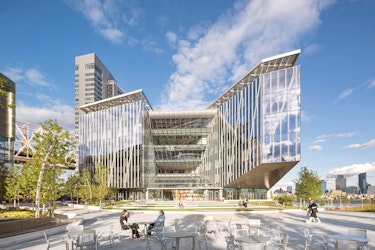
Credit: Architect
In conclusion, innovation has transformed the architectural industry in numerous ways, from the way architects approach design to the materials they use and the technologies they employ. As the world continues to change and evolve, it is likely that the architectural industry will continue to adapt and innovate, creating buildings and structures that are both functional and beautiful while also addressing the pressing challenges of sustainability, urbanization, and technology.
